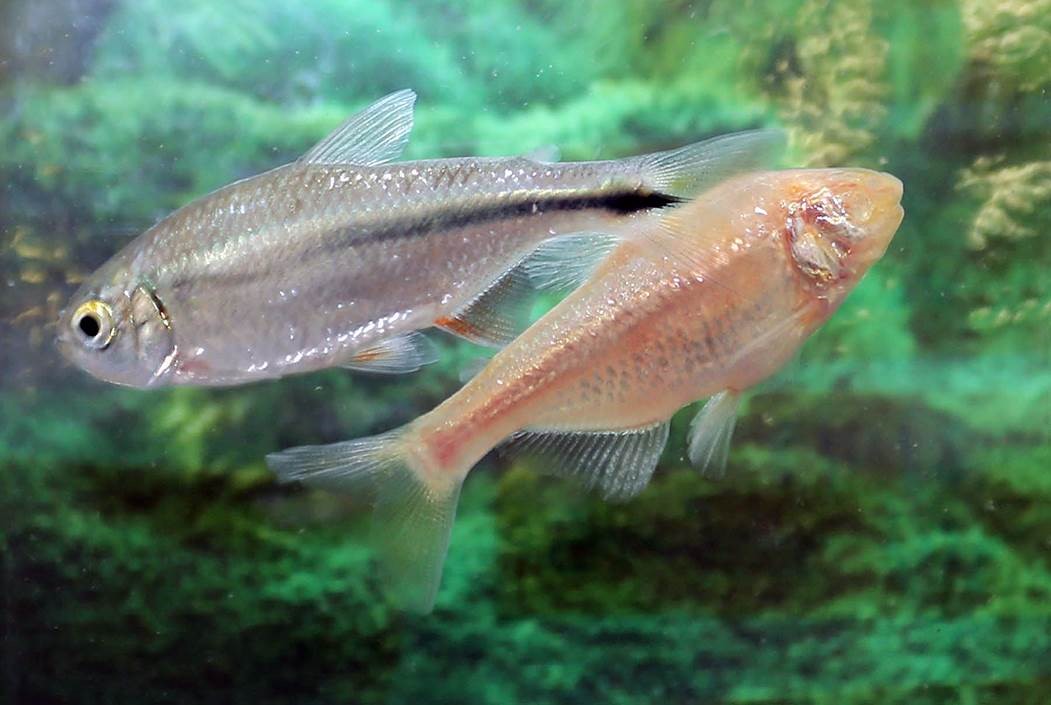
Mexican tetra fish (left) and Pachon cave fish (right). Photo credit: Colin Beesley
About a year ago we talked about how Mexican tetra (Astyanax mexicanus) may hold the clues to treating diabetes. New research shows that is not all these tiny fish can teach us. Researchers at the University College London and the University of Oxford now think these fish may hold clues to regenerating damaged heart tissue. Their findings were published in Cell Reports.
Mexican tetra are freshwater fish. Over millions of years, some of these fish ended up in caves and as a result, they lost their pigmentation and their vision. The research team compared surface-dwelling tetra to those living in the Pachon caves and found that the surface-dwelling fish can regenerate their hearts, while the cave-dwelling fish (like people) could not repair damaged heart tissue and instead developed scar tissue. When the team cross-bred the fish, some of the offspring were able to regenerate their heart tissues. The gene thought to be responsible for this remarkable heart regenerating ability is lrrc10, a gene also found in humans. The hope is to learn more about this gene in fish and humans to hopefully develop a way to repair heart tissue after a heart attack or other injury.
Source:
Stockdale WT, Lemieux ME, Killen AC, van Aerle R, Yamamoto Y, Mommersteeg MTM. Heart Regeneration in the Mexican Cavefish. Report. 25(8):1997-2007, 2018.
Categories: Illnesses and Injuries, Nature's Solutions
Tags: broken heart, cardiac, evolution, fish, gene, heart attack, Mexican, repair
